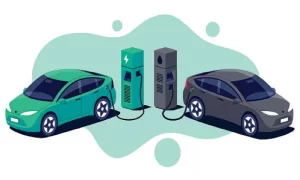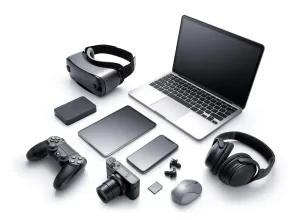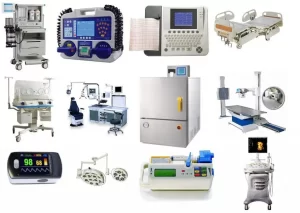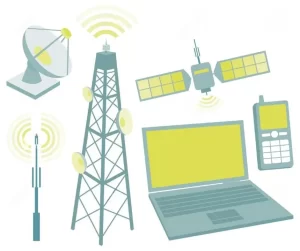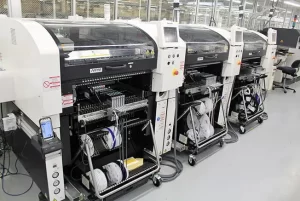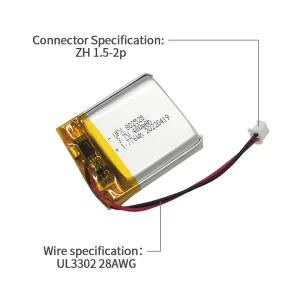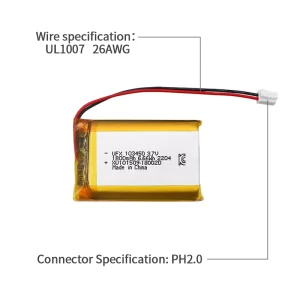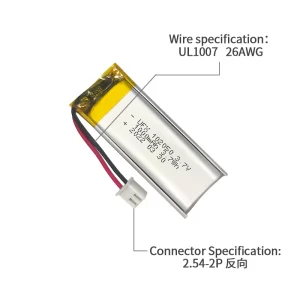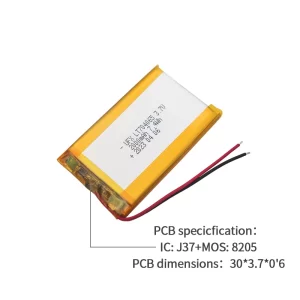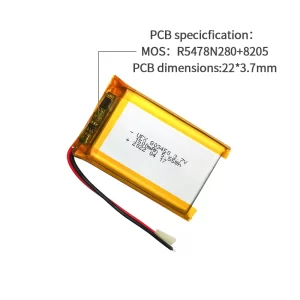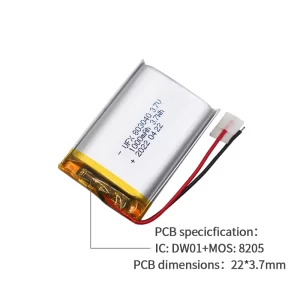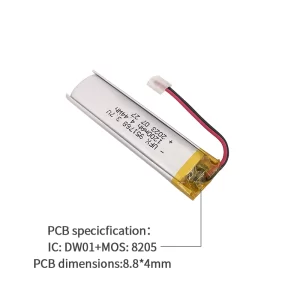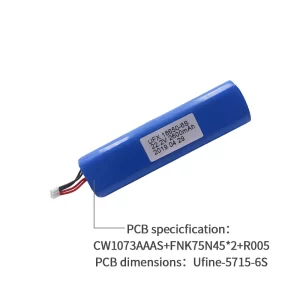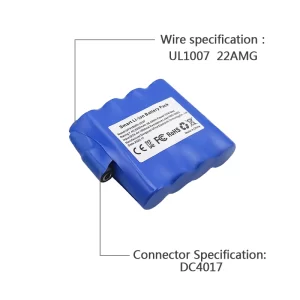Do you often worry about the life of the battery on your device? A simple outlook could be tied to knowing more about your Battery Management System. From a smartphone to a laptop to an electric vehicle, BMS is a critical software unit devised in coordination with the battery, aimed at managing the general performance and life optimization of the battery in use.
So, through these articles, we will help you understand what a BMS means, how a Battery Management System works, its components, and so on.
Let’s get started.
Part 1. BMS Meaning
A Battery Management System is an electronic system designed mainly for rechargeable batteries. It hovers over a battery’s condition, controls its environment, and ensures that the intended activity on the battery works well and safely.
It monitors the battery’s voltage, how much power is being drawn, and how hot it’s becoming. It tries to maintain similar proportions of a charge in the different compartments of the battery. At the same time, the equipment prevents the battery from getting too full or empty or even prevents a short circuit.
In other words, a BMS can be compared to a battery keeper, which ensures its safety and long life for your battery. So, it goes a long way for the safe and extended operation of phones and cellular electric vehicles during cellular device usage.
But what are the components of BMS? Let’s discuss this in detail.
Part 2. Components of BMS
BMS includes many critical components, and they all have essential duties in the proper functionality and safe operation of the battery.
Here are the main components:
- Voltage Sensors: Monitor the voltage of individual cells to ensure they remain within safe limits.
- Current Sensors: Help measure the amount and flow of current in and out of the battery pack, reducing overcharging and over-discharging.
- Temperature sensors: Monitor the battery pack’s temperature to avoid bringing it to a level where heat might get an early end to life or pose any danger.
- Cell Balancing Circuit: This will work in such a manner that the voltage levels of the individual cells will be leveled to give them all an equivalent capability and hence prolong the collective life of the battery.
- Safety Disconnects: The battery can be disconnected from the load to eliminate overcharge, over-discharge, and overheating of the battery pack.
- Battery Charger: Manages the charging process, ensuring the battery is charged safely and efficiently.
- Battery Management Unit (BMU): It receives all the performances of the battery, including information through monitoring by the BMS, such as sensors and monitor readings, on how well the battery is doing and data exchange with other systems.
These work in concert to assure health and performance at a single-cell level within the battery pack, with a high level of safety and effectiveness in operation over the pack’s life.
Now, let’s understand how a Battery Management System works in detail.
Part 3. How does a battery management system work?
As stated generally in the introduction in layman’s terms, the BMS monitors and controls all necessary properties of an overall battery system.
It achieves this through sensors, control circuits, and software algorithms.
Here’s how it works:
1. Monitoring:
It is thus designed to track the real-time voltage, current, and temperature in each cell under observation by the BMS. Besides that, it communicates information on the general state of charge (SOC) and state of health (SOH).
2. Control:
It controls the process of charging and battery pack discharging, whereby the information it uses to monitor and avoid overcharging, over-discharging, and high temperatures is collected by sensors. In addition, it also provides cell balancing so that the cells would remain uniform or balanced with each other.
3. Safety Features:
In such a case, BMS protects against all such absurd protection whereby during severe overvoltage states or over-temperature or drastic failure of the battery pack with a potential to impair the battery pack or other surrounding facilities, it may also hurt them. The isolation level also elevates to the extent of separating the battery pack from the charger or the load.
4. Communication:
For instance, this BMS will be controllable by an onboard computer in the vehicle to provide information about the battery’s condition or by the smart home system for discharging and charging management.
5. Efficiency Optimization:
The battery management system is being optimized so that the charging and discharging activities of the battery pack can be in the best permissible conditions for performance, efficiency, and life through time.
It is a central device that secures the safe and efficient operations of battery packs, thus drawing particular interest in applications ranging from consumer electronics to electric vehicles.
Part 4. Applications of BMS
Adaptive Battery Management System with applications that will be dispersed to various industries and implemented on devices wherever chargeable batteries are used.
Here are some typical applications:
Electric Vehicles (EVs):
This makes BMS very critical tier-one equipment for electric vehicles since it will ensure that the battery pack operates perfectly, safely, and efficiently while being in charge of proper operation.
Energy Storage Systems (ESS):
BMS helps manage and store energy from solar panels and wind turbines in renewable energy systems.
Consumer Electronics:
BMS is used in smartphones, laptops, and other portable devices to optimize battery performance and safety.
Medical Devices:
Medical equipment, such as portable defibrillators and monitoring devices, rely on BMS for reliable power supply.
Telecommunications:
BMS is used in backup power systems for cell towers and communication networks.
Marine and RVs:
BMS helps manage battery systems in marine vessels and recreational vehicles for reliable power supply.
Industrial Equipment:
In industrial settings, BMS is used in forklifts, warehouse robots, and other battery-powered equipment.
This has become practical for many industries, ensuring efficient and safely operated battery systems on the side of technology and sustainability.
Part 5. How to choose a good BMS supplier?
Choosing the right Battery Management System supplier is crucial for ensuring the reliability and performance of your battery-powered devices.
Ufine Battery Manufacturer is a trusted supplier of battery management systems and batteries for various applications.
We specialize in designing and embedding BMS solutions that ensure your battery packs’ safety, efficiency, and longevity.
Applications and Product:
Digital Battery:
3.7V 480mAh Lithium-ion Battery (802528)
3.7V 1800mAh Lithium-ion Battery (103450)
3.7V 1000mAh Lithium-ion Battery (102050)
Low-Temperature Device:
3.7V 2000mAh Low Temperature Battery (704065LT)
Medical Device:
3.7V 1500mAh Lithium-ion Battery (803450)
3.7V 1000mAh Lithium-ion Battery (803040)
Beauty and Skin Care:
3.7V 1200mAh Lithium-ion Battery (951768)
Power Tool:
22.2V 2600mAh 18650 Battery Pack (18650-6S)
7.4V 5200mAh 18650 Battery Pack (18650-2S2P)
12.8V 5000mAh Cylindrical Battery (32700-4S)
With Ufine Battery Manufacturer, it’s a guarantee that the customer will be accorded only the best battery solution and BMS, tailor-designed to fit the most peculiar needs of a very diverse client base. Feel free to contact us now to discuss your battery management issue further.
Part 6. FAQs
-
What is the purpose of a Battery Management System (BMS)?
A battery management system is designed to ensure and control some parameters of a battery pack, such as voltage, current, and temperature, so safe and efficient cell functioning is always possible. -
How does a BMS help extend the lifespan of a battery?
This, in turn, helps manage charge levels between the individual cells, hence avoiding overcharging and over-discharging and enhancing the life extension of the battery pack. -
What safety features does a BMS provide?
The following are the functionalities of BMS that have been discussed and undertaken to guarantee the protection of the battery pack before breakdown from any overvoltage, overcurrent, or temperature monitoring. -
Can a BMS be used with different types of batteries?
Yes, a BMS can be designed to work with a spectrum of rechargeable batteries ranging from lithium-ion to lead-acid and nickel-based batteries. -
How does a BMS communicate with external devices?
The BMS may be able to communicate with external units through Controller Area Network (CAN) and, in other cases, Modbus to relay the information received on the status of the battery or give the charge and discharge commands.
Related Tags:
More Articles

How to Choose the Best Floor Scrubber Battery for Commercial Cleaning?
Selecting the ideal floor scrubber battery ensures a long runtime, rapid charging, and minimal maintenance for efficient commercial cleaning operations.
Battery for Blower vs Battery for Leaf Vacuum: Which One Should You Choose?
Battery for blower vs leaf vacuum—learn the key differences in power, fit, and runtime to choose the right battery for your outdoor tool needs.
How to Choose the Right Battery for Blower?
Choosing the right blower battery? Consider voltage, capacity, chemistry & usage. This guide helps match the best battery for peak performance.
How to Choose the Best Insulated Battery Box for Lithium Batteries?
Choosing the Best Insulated Battery Box for Lithium Batteries? Discover key factors such as size, material, and safety for optimal protection and performance.
7 Critical Elements on a Lithium Battery Shipping Label
What must be on a lithium battery shipping label? Learn 7 key elements to ensure safety, legal compliance, and correct handling across all transport modes.
